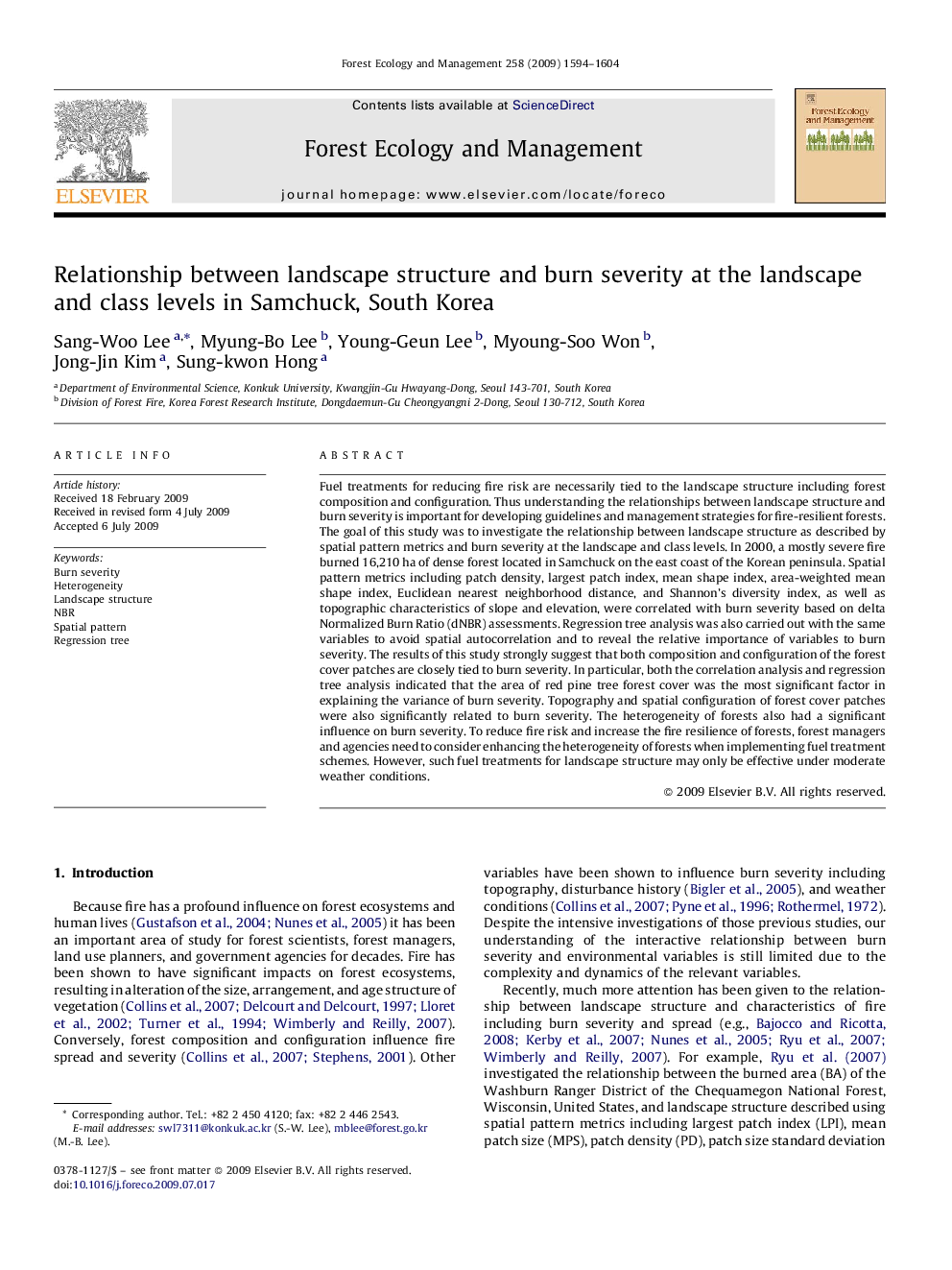| Article ID | Journal | Published Year | Pages | File Type |
|---|---|---|---|---|
| 88999 | Forest Ecology and Management | 2009 | 11 Pages |
Fuel treatments for reducing fire risk are necessarily tied to the landscape structure including forest composition and configuration. Thus understanding the relationships between landscape structure and burn severity is important for developing guidelines and management strategies for fire-resilient forests. The goal of this study was to investigate the relationship between landscape structure as described by spatial pattern metrics and burn severity at the landscape and class levels. In 2000, a mostly severe fire burned 16,210 ha of dense forest located in Samchuck on the east coast of the Korean peninsula. Spatial pattern metrics including patch density, largest patch index, mean shape index, area-weighted mean shape index, Euclidean nearest neighborhood distance, and Shannon's diversity index, as well as topographic characteristics of slope and elevation, were correlated with burn severity based on delta Normalized Burn Ratio (dNBR) assessments. Regression tree analysis was also carried out with the same variables to avoid spatial autocorrelation and to reveal the relative importance of variables to burn severity. The results of this study strongly suggest that both composition and configuration of the forest cover patches are closely tied to burn severity. In particular, both the correlation analysis and regression tree analysis indicated that the area of red pine tree forest cover was the most significant factor in explaining the variance of burn severity. Topography and spatial configuration of forest cover patches were also significantly related to burn severity. The heterogeneity of forests also had a significant influence on burn severity. To reduce fire risk and increase the fire resilience of forests, forest managers and agencies need to consider enhancing the heterogeneity of forests when implementing fuel treatment schemes. However, such fuel treatments for landscape structure may only be effective under moderate weather conditions.
